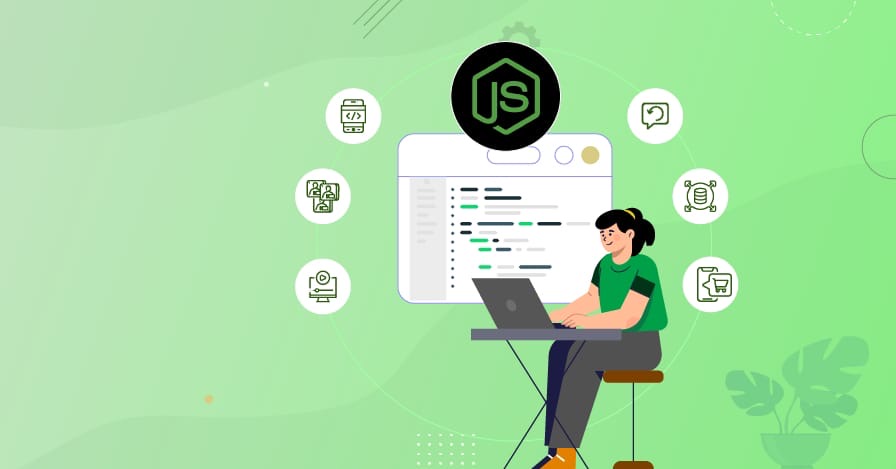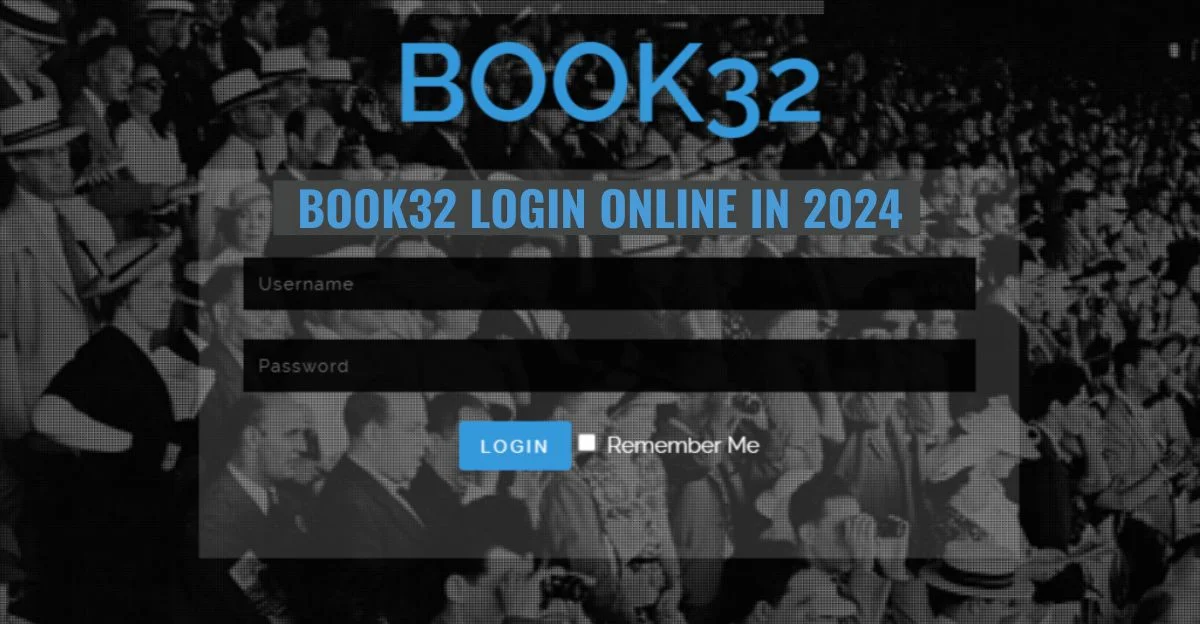TECHNOLOGY
The Best Apps You Can Develop with Node.js Technology

When Node.js was introduced in 2009, nobody could have predicted its immense impact on app development. Today, Node.js is the top choice for meeting diverse applications for its event-driven, non-blocking I/O model.
From real-time chats to single-page applications and collaboration tools, Node.js allows developers to build full-stack applications using a single programming language. Besides, Node.js extends its capabilities to the backend, making it a comprehensive platform for building robust, scalable apps.
This blog explores the Node.js use cases, showcasing the range of applications you can create with it. Let’s jump in.
Single-Page Applications (SPAs) with Node.js
Single-Page Applications (SPAs) load one HTML page and update content dynamically without reloading. Unlike traditional sites, they use APIs to fetch data in the background, updating only needed parts of the page. This creates an app-like experience that’s smooth and fast.
Benefits of SPAs:
- Fast Load Times: After the first load, only data is exchanged, cutting wait times.
- Better User Experience: Seamless navigation keeps users engaged.
- Reduced Server Load: With rendering done client-side, server demands are lighter.
- Cross-Platform Usability: SPAs work well across desktops, tablets, and phones.
SPAs are great for interactive applications and real-time updates. Node.js development offers strong support for building SPAs, making it a top choice for developers.
Why Node.js Works Well for SPAs:
- Efficient Async Handling: Node.js’s non-blocking, asynchronous setup makes it fast, even with complex API calls.
- Smooth Data Updates: Node.js works well with JavaScript frameworks like React and Angular for quick data exchange and real-time features.
- Unified JavaScript Stack: Node.js lets developers use JavaScript on both frontend and backend, simplifying workflows.
- Real-Time Capabilities: Node.js supports WebSocket for real-time updates, making it ideal for collaborative and messaging tools.
Examples of SPAs with Node.js:
- Gmail: Users get a smooth experience with quick data updates, thanks to Node.js.
- Trello: Real-time task updates and responsive interactions powered by Node.js.
- Netflix: Rapid browsing with minimal latency, optimized for high traffic.
Real-Time Collaboration Apps with Node.js
In today’s remote work world, real-time collaboration apps are essential. They let teams work together seamlessly, even across different locations, making remote work easier and more productive. Node.js is popular for building these tools because they support real-time updates and can handle lots of users at once.
Why Real-Time Collaboration Tools Matter:
- Enhanced Productivity: Teams work together instantly, reducing delays.
- Streamlined Communication: Built-in messaging keeps everyone on the same page.
- Transparency: Real-time updates mean everyone stays aligned.
- Remote Work Compatibility: These tools create a shared workspace for remote teams.
Why Node.js is Great for Collaboration Apps:
- Real-Time Data Sync: Node.js supports instant data updates across users through WebSocket (e.g., Socket.io), so changes are visible right away.
- Scalability: Node.js’s non-blocking nature handles many users at once, maintaining performance even with high traffic.
- Modular Architecture: Node.js lets developers add features like file sharing or notifications easily, making tools adaptable.
- Cross-Platform Compatibility: Node.js supports apps across devices, so teams can collaborate on desktops, tablets, or phones.
Examples of Real-Time Collaboration Apps with Node.js
- Trello: Real-time project updates and notifications powered by Node.js for seamless teamwork.
- Figma: Collaborative design with instant edits and low latency, supported by Node.js.
- Google Docs Concept: Real-time editing and versioning—achievable with Node.js for similar apps.
Streaming Applications with Node.js
Streaming applications have transformed media consumption, providing instant access to movies, music, TV shows, and live events. Unlike traditional downloads, streaming lets users enjoy content in real-time. This shift matches today’s demand for quick, seamless experiences.
Why Streaming is So Popular:
- Convenience: No waiting; content is available immediately.
- Personalization: Tailored recommendations keep users engaged.
- Accessibility: Works on smartphones, tablets, desktops, and smart TVs.
- Cost-Effective: Affordable subscription models give access to huge libraries.
- Global Reach: Scales easily to serve millions worldwide.
Beyond entertainment, streaming is essential for education, gaming, and corporate communication.
Node.js Advantages for Streaming Applications:
- Efficient Data Handling: Node.js streams data in small chunks, reducing latency for smooth playback. Its stream module supports essential streaming functions.
- Real-Time Data Management: Node.js’s non-blocking model handles massive data flows and multiple user connections without slowdowns.
- Scalability: Node.js supports horizontal scaling and clustering, ideal for handling high traffic.
- Real-Time Features: Seamless WebSocket integration allows for live chat and real-time content suggestions.
- Cross-Platform Compatibility: Node.js supports consistent performance across devices.
Examples of Streaming Apps with Node.js:
- Netflix: Uses Node.js to manage millions of requests with low latency.
- YouTube: Optimizes video streaming and live updates.
- Twitch: Powers live streaming and real-time chat for interactive user experiences.
- Spotify: Ensures real-time music delivery and personalized playlists, providing uninterrupted listening.
Real-Time Chat Applications with Node.js
In today’s digital world, real-time chat isn’t a luxury – it’s a must. Whether it’s customer support, team collaboration, or social messaging, users expect instant responses. However, the end result and performance depend largely on the skillful execution by the developers working on the project.
Hiring Node.js developers with expertise and experience in executing similar projects to create real-time chat applications is the way to go. Experienced developers will ensure your app utilizes its key features.
Why Real-Time Applications Are So Popular:
- Instant Communication: Enables instant data exchange.
- Enhanced User Engagement: Immediate updates keep users engaged.
- Seamless Collaboration: Multiple Users can work simultaneously without delays.
- Better Customer Support: Real-time communication to resolve customer queries instantly.
- High Efficiency in IoT Systems: IOT devices can utilize Instant data processing for better performance.
Why Node.js Works for Real-Time Chat Application?
- Event-Driven Architecture: Node.js applications rely on an event-driven, non-blocking setup. This lets Node.js developers handle multiple user events smoothly, which is essential for real-time chat.
- Concurrent Connections: Node.js manages high user numbers efficiently, making it perfect for large-scale chat apps.
- Asynchronous Operations: Tasks run asynchronously, so the app stays fast and responsive.
- WebSocket Integration: Node.js uses WebSocket for quick, two-way communication with minimal delay.
- Scalability: Node.js applications can scale easily, supporting a growing user base without heavy redevelopment.
Examples of Real-time Chat Apps with Node.js
- Slack: Uses Node.js for real-time messaging, updates, and notifications.
- Socket.io-Powered Apps: Supports customer support, gaming, and social messaging.
IoT Applications with Node.js
The Internet of Things (IoT) connects physical devices like appliances, machinery, and sensors to the Internet. These devices collect and exchange data, enabling automation and smart functionalities. IoT adoption is increasing in homes, healthcare, agriculture, manufacturing, and logistics.
Challenges with IoT:
- Data Volume: IoT devices produce huge amounts of real-time data.
- Low Latency Needs: Applications like healthcare monitoring require instant responses.
- Scalability: IoT networks must support millions of devices simultaneously.
- Real-Time Communication: Reliable communication between devices is key.
Node.js has become a go-to solution for IoT applications, meeting these challenges with efficient data handling and low latency.
Why Node.js Works for IoT:
- Handles Multiple Connections: Node.js’s non-blocking model supports thousands of concurrent connections, ideal for IoT systems.
- Real-Time Data Processing: Node.js processes continuous data streams, crucial for applications like healthcare monitoring and industrial automation.
- Event-Driven Architecture: Node.js efficiently manages IoT events, enabling fast responses across devices.
- Scalability: Node.js supports growing IoT networks, making it easy to integrate new devices.
- MQTT & WebSocket Support: Node.js works well with MQTT and WebSocket, two essential protocols for IoT communication.
Examples of IoT Applications with Node.js:
- Smart Homes: Node.js powers real-time control of thermostats, lights, and security cameras.
- Industrial IoT: Node.js processes sensor data in factories, supporting predictive maintenance.
- Healthcare Devices: IoT health monitors use Node.js for real-time communication with providers.
- Logistics: Node.js helps track goods in transit, providing real-time supply chain visibility.
Node.js for E-commerce Applications
E-commerce platforms are the backbone of modern trade, connecting businesses with customers globally. With the rise in online shopping, users expect fast, smooth experiences, and real-time interactions.
Core Needs for E-commerce Apps:
- Scalability: Handle traffic surges during peak sales or holiday events.
- Performance: Ensure fast loading times to prevent cart abandonment.
- Real-Time Features: Provide live inventory updates and personalized experiences.
- Reliability: Maintain consistent performance even under heavy loads.
Node.js development offers an effective backend solution, meeting these demands and enabling robust E-commerce applications.
Advantages of Node.js for E-commerce Apps:
- Handles High Traffic: Node.js can manage thousands of user requests simultaneously, keeping the platform running smoothly during high-traffic times.
- Real-Time Inventory and User Interaction: Node.js applications allow instant updates on stock, pricing, and order confirmations. Real-time updates improve customer experience and prevent overselling.
- Scalability: Node.js supports horizontal scaling and microservices, allowing the platform to grow with the business.
- Unified JavaScript Stack: Node.js developers use JavaScript for both frontend and backend, which streamlines development.
- Speed and Performance: Node.js’s lightweight runtime boosts loading speeds, increasing user retention and conversions.
Examples of E-commerce Platforms Using Node.js:
- eBay: Node.js powers real-time bidding and notifications, managing huge traffic during auctions.
- Groupon: Node.js helped Groupon scale and cut page load times, improving user experience.
- Walmart: Node.js enables Walmart to handle high demand, especially during Black Friday, with features like real-time inventory updates.
- Amazon-Like Marketplaces: Many E-commerce platforms use Node.js for order tracking, recommendations, and fast payment processing.
RESTful APIs with Node.js
RESTful APIs (Representational State Transfer APIs) connect different applications, allowing smooth communication and data sharing. They use HTTP methods like GET, POST, PUT, and DELETE to access and manage resources, making them a standard in software development.
Key Benefits of RESTful APIs:
- System Integration: Connects diverse applications, creating cohesive ecosystems.
- Scalability: Supports various clients, such as web apps, mobile apps, and third-party services.
- Flexibility: Works across different platforms for seamless data exchange.
- Streamlined Development: Separates frontend and backend for easier scaling and maintenance.
RESTful APIs are widely used in E-commerce, fintech, social media, and IoT applications.
Why Use Node.js for RESTful APIs? – Node.js development has become popular for RESTful APIs because it’s fast, scalable, and easy to use. Key advantages include:
- Efficiency and Scalability: Node.js’ event-driven, non-blocking architecture handles multiple API requests at once, ideal for high-traffic platforms like social media.
- JSON Compatibility: Since JSON is the standard data format for APIs, Node.js’s native JSON support makes data handling simple and fast.
- Real-Time Features: Node.js integrates easily with WebSockets, allowing real-time updates alongside RESTful APIs.
- Unified Language: Node.js developers use JavaScript on both server and client sides, simplifying data handling and speeding up development.
- Cross-Platform Support: Node.js applications work across web, mobile, and IoT devices, making RESTful APIs lightweight and responsive.
Examples of RESTful APIs Using Node.js
- PayPal: Uses Node.js for fast, reliable payment processing, handling millions of API calls.
- LinkedIn: Migrated to Node.js for faster response times and efficient mobile API performance.
- Uber: – Utilizes Node.js for booking, fare calculation, and real-time updates.
- Stripe: Built with Node.js, Stripe’s APIs allow easy payment processing integration.
Microservices Architecture with Node.js
Microservices architecture splits an application into small, independent services. Each service performs a specific function and communicates with others through APIs. Unlike traditional monolithic setups, microservices are flexible, scalable, and easier to maintain.
Key Benefits of Microservices Architecture:
- Scalability: Each service scales independently, optimizing resources.
- Flexibility: Teams can work on services using different technologies.
- Speed: Smaller services speed up development, testing, and deployment.
- Resilience: Issues in one service don’t impact the entire system.
- Easy Maintenance: Isolated services make debugging and updates simple.
Microservices are popular in industries with complex systems like E-commerce, finance, and transportation.
Why Node.js for Microservices? – Node.js is ideal for microservices because it’s efficient, modular, and lightweight.
- Efficiency: Node.js applications handle many small operations at once, perfect for microservices handling high request volumes.
- Independent Scaling and Deployment: Node.js allows independent deployment and scaling of services, reducing infrastructure costs.
- API Support: Node.js supports API-driven communication with REST, GraphQL, and WebSockets, streamlining communication between services.
- Real-Time Performance: Its event-driven model ensures low latency, ideal for real-time applications like ride-sharing.
- Developer Ecosystem: Node.js developers benefit from a rich library ecosystem, supporting tools like Docker and Kubernetes for containerizing and managing services.
Companies Using Node.js for Microservices:
- GoDaddy: Uses Node.js for fast, independent services, boosting performance.
- Uber: Utilizes Node.js for millions of real-time ride requests and updates.
- Netflix: Powers lightweight, efficient services with Node.js for content delivery.
- PayPal: Uses Node.js to manage scalable, reliable payment services independently.
Conclusion
Node.js is a versatile and efficient platform that streamlines a lot of development hassle, providing a single platform to build apps with ease. It has a well-balanced mix of speed, flexibility, and performance, which adds to its event-driven, non-blocking I/O model. However, the potential of the final app depends a lot on the expertise of the Node.js developer.
An experienced developer ensures optimal use of Node.js core features while addressing performance challenges effectively. They can also enhance your application further by applying best practices for Node.js performance optimization, ensuring smoother functionality and maximum efficiency.
With Node.js, the possibilities for innovative and scalable applications are truly endless.So, it will remain the go-to choice for developers and top companies as the need for fast and scalable applications grows.
For more on this topic, feel free to visit the rest of our blog!
TECHNOLOGY
RepMold Explained: Faster, Greener, Better Manufacturing

Introduction to RepMold technology
In a world where efficiency and sustainability are more crucial than ever, RepMold technology is making waves in the manufacturing industry. This revolutionary approach promises to transform how products are made, offering speed without sacrificing quality or environmental responsibility. As businesses face increasing pressure to adapt to eco-friendly practices while meeting consumer demands for rapid production, RepMold emerges as a game-changer. Curious about what sets it apart from traditional methods? Let’s dive into the fascinating realm of RepMold and explore how it could redefine manufacturing as we know it.
How RepMold is different from traditional manufacturing methods
RepMold stands out by utilizing advanced materials and methods that streamline the production process. Unlike traditional manufacturing, which often relies on extensive machinery and multiple assembly steps, RepMold integrates a more direct approach.
This technology employs 3D printing techniques to create molds directly from digital designs. This not only speeds up the production timeline but also reduces waste significantly. Traditional methods may generate excess material during cutting or machining processes, while RepMold optimizes resource use.
Additionally, RepMold can accommodate complex geometries with ease. This flexibility allows for innovative product designs that were previously difficult or impossible to achieve using conventional manufacturing techniques.
Cost efficiency is another key differentiator. By minimizing labor costs and reducing time spent on prototyping, businesses can save money while improving their overall output quality. The shift toward this modern method marks a transformative step in manufacturing practices across various industries.
Benefits of RepMold for businesses and the environment
RepMold technology offers a range of advantages for both businesses and the environment. For manufacturers, it streamlines production processes. The efficiency gained reduces lead times significantly, allowing companies to meet market demands swiftly.
From an environmental perspective, RepMold minimizes waste generation. Traditional methods often produce excess material that ends up in landfills. RepMold’s precision ensures that resources are used more effectively.
Energy consumption is another area where RepMold shines. By utilizing advanced materials and innovative techniques, this approach consumes less energy during manufacturing operations compared to conventional practices.
Moreover, businesses adopting RepMold can enhance their sustainability profile. This not only attracts eco-conscious consumers but also opens doors to new markets as green initiatives become increasingly essential in today’s economy.
Success stories of companies using RepMold
Several companies have embraced RepMold technology, leading to remarkable transformations in their manufacturing processes. One notable example is EcoParts Inc., which significantly reduced its waste output by adopting this innovative method. Their shift not only helped the environment but also improved their bottom line.
Another success story comes from TechInnovate, a startup that used RepMold for rapid prototyping. They managed to bring products to market faster than competitors, gaining a crucial edge in the tech landscape.
Additionally, GreenTools has reported enhanced efficiency and lower energy consumption since switching to RepMold techniques. This transition allowed them to meet sustainability targets while boosting production rates.
These examples showcase how diverse industries can benefit from integrating RepMold into their operations, paving the way for smarter and greener manufacturing solutions.
The process of implementing RepMold in your manufacturing process
Implementing RepMold in your manufacturing process begins with a thorough assessment of your existing systems. Identify areas where traditional methods may fall short, particularly regarding speed and sustainability.
Next, consider the materials suitable for RepMold technology. This innovative approach often utilizes eco-friendly alternatives that can enhance product quality while reducing waste.
Training staff is essential to ensure a smooth transition. Workshops on RepMold techniques will empower employees to embrace new workflows confidently.
Collaborate closely with suppliers who specialize in RepMold-compatible materials and machinery. Their expertise can streamline integration into your operations.
Monitor performance metrics after implementation. Regular evaluations will help you refine processes and maximize efficiency over time, ensuring that the benefits of RepMold are fully realized throughout your production cycle.
The future of RepMold and its potential impact on the industry
The future of RepMold is bright and full of potential. As industries strive for sustainability, this technology offers an innovative pathway to reduce waste and energy consumption.
Advancements in materials science are set to enhance RepMold’s capabilities. New bio-based or recycled materials will only expand its applications across various sectors.
Moreover, as artificial intelligence integrates into manufacturing processes, the efficiency of RepMold can increase exponentially. Predictive analytics may help optimize production schedules and minimize downtime.
With global pressure to adopt greener practices, companies investing in RepMold could gain a competitive edge. This shift not only addresses regulatory challenges but also aligns with consumer demand for sustainable products.
As more organizations embrace this cutting-edge approach, we may witness significant transformations in supply chains and product development timelines, redefining what efficient manufacturing looks like moving forward.
Conclusion
RepMold technology is not just a trend; it’s a revolution. As we delve deeper into the 21st century, the demand for faster, greener, and more efficient manufacturing processes continues to rise. RepMold stands out as an innovative alternative that promises to reshape the landscape of production.
This advanced method significantly reduces waste while improving speed and precision in manufacturing. Companies leveraging RepMold have already reported substantial gains in efficiency and reductions in their environmental footprint. The success stories emerging from various sectors highlight its versatility and effectiveness.
Implementing RepMold may seem daunting at first glance, but with proper guidance and strategic planning, businesses can seamlessly transition into this modern approach. As technology evolves further, so will RepMold’s capabilities—potentially leading industries toward sustainable growth without sacrificing productivity.
The future looks bright for those who embrace this transformative technology. Adopting RepMold could be key to staying competitive in an ever-evolving marketplace where sustainability is becoming non-negotiable. By prioritizing both economic viability and environmental responsibility, companies can pave the way for a new era of manufacturing excellence.
TECHNOLOGY
Your Ultimate Guide to Book32 LOGIN Online in 2024

Introduction to Book32 LOGIN
Welcome to the world of Book32 LOGIN, where accessing your favorite literary treasures has never been easier. In today’s digital age, having a seamless way to manage your reading journey is essential. Whether you’re an avid reader or just starting out, Book32 offers a platform that caters to all book lovers. Imagine having a virtual library at your fingertips—easy logins and quick access make diving into new stories simple and enjoyable.
As we step into 2024, understanding how to navigate the Book32 platform can enhance your experience significantly. This guide will provide insights on creating an account, navigating the website, and troubleshooting any issues you might encounter along the way. So grab a cup of coffee and settle in; let’s explore everything you need to know about optimizing your Book32 LOGIN experience!
Benefits of Using Book32 LOGIN
Using Book32 LOGIN streamlines your online reading experience. It provides seamless access to a vast library of books and resources. With just one login, you can dive into numerous titles without hassle.
Another significant benefit is the personalized recommendations. The platform learns your preferences over time, suggesting new reads that match your interests. This tailored approach keeps your literary journey exciting.
Security is also a top priority with Book32 LOGIN. Your personal information remains safe, allowing you to focus on enjoying books rather than worrying about data privacy.
Additionally, the user-friendly interface makes navigation effortless for readers of all ages. Whether you’re a tech-savvy individual or someone less familiar with technology, Book32 offers an intuitive design that anyone can master quickly.
Having access to community features enhances engagement among users. You can connect with fellow readers and share insights on various titles while enriching your overall experience.
How to Create a Book32 Account?
Creating a Book32 account is a straightforward process that opens up a world of possibilities. Start by visiting the official Book32 website. Look for the “Sign Up” or “Register” button, typically located on the homepage.
Once you click it, you’ll be prompted to fill out some basic information. Common requirements include your name, email address, and a secure password. Make sure to choose a strong password to keep your account safe.
After entering your details, check for any verification emails in your inbox. Sometimes these can land in spam folders, so keep an eye there too!
Follow the instructions provided in the email to verify your account. This step is crucial as it ensures that only legitimate users gain access.
With verification complete, you’re ready to log into Book32 and explore all its features!
Navigating the Book32 Website
Navigating the Book32 website is designed to be straightforward. Upon landing on the homepage, you’ll notice a clean layout that highlights various sections, making it easy to find what you need.
The main menu features categories such as “Books,” “Authors,” and “Recommendations.” Clicking on any of these options takes you deeper into curated content tailored for your interests.
A search bar at the top allows for quick access to specific titles or authors. This feature saves time and enhances usability.
As you scroll through listings, hover over book covers for brief descriptions without clicking away from your current view. This makes browsing more efficient.
Don’t forget about user reviews and ratings featured alongside each title. They provide valuable insights from fellow readers before making a decision.
Features and Functions of Book32 LOGIN
Book32 LOGIN offers a variety of features designed to enhance user experience. The intuitive interface makes navigation seamless, allowing users to access their favorite books and resources quickly.
One standout function is the personalized dashboard. This feature tailors recommendations based on your reading history, ensuring you discover new titles that match your interests.
Another useful aspect is the social sharing functionality. You can easily connect with friends and fellow readers, share thoughts on books, and even create reading groups for collaborative discussions.
The integrated search tool simplifies finding specific content within vast libraries. Whether you’re looking for a classic novel or the latest bestseller, results are just a click away.
Additionally, Book32 LOGIN allows users to track their reading progress. With customizable bookmarks and notes capabilities, keeping tabs on your current reads has never been easier.
Troubleshooting Common Issues with Book32
Experiencing issues with Book32 login can be frustrating. However, many problems have simple solutions.
First, check your internet connection. A weak signal may disrupt the login process. If you’re connected but still having trouble, try refreshing your browser or clearing its cache.
Incorrect credentials are a common hiccup. Ensure that you’re entering the right username and password. If you forget either, use the “Forgot Password” feature for recovery options.
Sometimes, specific browsers may cause compatibility issues. Switching to another browser might resolve unexpected glitches during login attempts.
If all else fails and you’re still unable to log in, consider reaching out to Book32 support for personalized assistance. They can guide you through resolving any technical difficulties swiftly.
Tips for Maximizing your Experience with Book32 LOGIN
To get the most out of your Book32 LOGIN experience, start by familiarizing yourself with all available features. Explore each section thoroughly; you might discover tools that enhance your reading and learning.
Regularly update your profile information. This helps in personalizing content recommendations tailored to your interests and needs.
Utilize search filters effectively. They allow you to quickly find specific titles or authors, streamlining the overall navigation process within the platform.
Engage with community features if available. Interacting with other users can provide fresh insights and recommendations that enrich your journey through books.
Make it a habit to check for updates on new releases or exclusive offers. Staying informed ensures you’re always in touch with what’s trending within the Book32 ecosystem.
Future Updates and Enhancements for Book32
Book32 is poised for exciting updates in 2024. Users can expect a more intuitive interface designed to enhance user experience. The aim is to make navigation smoother and more straightforward.
New features are also on the horizon, including personalized recommendations based on reading habits. This will help users discover new titles that align with their interests.
In addition, enhanced security measures are being implemented to protect user data better. As digital privacy concerns grow, Book32 is committed to keeping your information safe.
The platform may introduce community features as well, allowing readers to connect and share reviews or suggestions seamlessly. Engaging with fellow book lovers could become an integral part of the Book32 experience soon.
Stay tuned for these enhancements that promise to elevate how you interact with books online!
Conclusion
Book32 LOGIN offers a streamlined gateway for users to access an array of features and services. Embracing the benefits of this platform enhances your reading experience, making it more enjoyable and efficient. Creating an account is straightforward, allowing you to dive into its extensive offerings quickly.
Navigating the Book32 website becomes intuitive once you’re familiar with its layout. The various functions cater to different needs, ensuring that every user finds something valuable within the platform.
While some may encounter common issues during their journey, troubleshooting can often resolve these hiccups swiftly. With a few tips and tricks at hand, you can maximize your experience on Book32 LOGIN.
Looking ahead, updates are expected to roll out in 2024 that will further enhance functionality and user engagement on the site. With all these aspects combined, there’s no doubt that Book32 LOGIN remains a top choice for book lovers looking for convenience and accessibility in their reading adventures.
ALSO READ: Love, Loss, and Resilience: The Inspiring Journey of Finley Aaron Love Lockwood
FAQs
What is “Book32 LOGIN”?
Book32 LOGIN is a digital platform that allows users to access and manage a vast online library, offering seamless login and personalized reading experiences.
How do I create a Book32 account?
To create a Book32 account, visit the official website, click on “Sign Up,” fill in your details, verify your email, and then log in to start exploring books.
What features does Book32 LOGIN offer?
Book32 LOGIN provides personalized book recommendations, easy navigation, community features, reading progress tracking, and secure data protection.
What should I do if I can’t log in to Book32?
If you experience login issues, check your internet connection, clear your browser cache, ensure correct credentials, or contact Book32 support for help.
Are there any upcoming updates for Book32 in 2024?
Yes, Book32 plans to introduce a more intuitive interface, enhanced security, personalized recommendations, and new community features in 2024.
TECHNOLOGY
The Importance of a Solar Power Meter in Monitoring System Performance

Have you ever wondered how efficient your solar panels are? A solar power meter can give you the answers.
This tool helps homeowners and businesses alike to understand how much energy their solar panels generate. It’s like having a health check-up on your solar system!
By using a solar power meter, you can make sure your investment is paying off. Stay with us as we explore why this gadget is a must-have for anyone relying on solar energy.
Performance Monitoring
Monitoring the performance of your solar panels is crucial for ensuring they work as expected. A solar power meter measures how much sunlight your panels convert into electricity. This helps you know if they are producing enough energy for your needs.
If your solar panels are not performing well, you might need to clean them or get them checked. This way, you can fix any problems and keep your energy supply steady.
Efficiency Optimization
Optimizing the efficiency of your solar energy systems means getting the most energy out of them. A solar power meter can help you identify the best placement for your panels. It shows where and when your panels get the most sunlight, so you can adjust their position if necessary.
Knowing the optimal times for energy production also allows you to plan your energy usage better. This way, you can use more solar energy when it’s abundant and save on your electricity bills.
Troubleshooting and Maintenance
Troubleshooting and maintaining your solar panels are important to keep them running smoothly. A solar power meter can alert you to issues that could reduce the efficiency of your panels. Regular checks with this tool help prevent small problems from becoming bigger ones.
By identifying issues early, you can ensure your solar system operates at peak system efficiency. This maintenance helps prolong the life of your solar panels, ensuring you get the most out of your renewable energy investment. If persistent issues arise, contact expert solar installers near you for professional assistance in diagnosing and resolving complex issues.
Verification of System Performance
Verification of system performance is an essential step in maintaining a solar power setup. A solar power meter not only measures current performance but also verifies if the system meets the expected standards set during installation. This ensures that your solar panels provide a consistent supply of power over time.
Regular verification helps in detecting any deviations in performance early on. By doing so, it allows for timely interventions to rectify issues, ensuring that the system continues to operate efficiently and effectively.
Financial Analysis
Understanding the financial benefits of your solar panel installation is as important as keeping it in good working condition. A solar power meter helps you calculate the savings on your electricity bills by showing how much energy you are generating versus consuming. It also assists in figuring out the return on investment over time, helping you see the financial impact of your solar panels.
Knowing your system’s financial performance can guide future decisions regarding solar energy investments. It provides concrete data on whether expanding your solar setup could lead to more savings or if the current system meets your financial goals.
Environmental Impact Assessment
Using a solar power meter helps you understand how much you are helping the environment. It shows the amount of energy your solar panels generate, which means less reliance on non-renewable energy sources. This reduction in fossil fuel usage contributes to lowering greenhouse gas emissions.
Assessing the environmental impact of your solar panels encourages responsible energy use. It allows for a clear view of your personal or business contribution to fighting climate change.
Predictive Maintenance
Predictive maintenance is a key part of keeping your solar panels in the best condition. It uses data from your solar power meter to predict when parts of your solar system may need attention. With this information, you can fix issues before they lead to bigger problems.
Having a system for predictive maintenance means fewer surprises and less downtime for your solar panels. It helps ensure that your solar energy system is always running smoothly, providing the maximum amount of energy possible.
Comparison With Expected Performance
Comparing the actual performance of your solar panels to what was expected is important. This tells you if your solar system is working as it should. If the performance matches the expectations, your system is in good shape.
If there’s a big difference between actual and expected performance, it might be time to check your system. You could need repairs or adjustments to get back on track.
Validation of Warranty Claims
Verifying guarantee claims is an important step for people who own solar panels. A solar power meter keeps track of how well your system works, which is very important if you need to make a guarantee claim. It makes sure you have all the information you need to back up your claim, which speeds up and simplifies the process.
If you have correct performance data, you can safely contact the maker or installer of your solar panels if they don’t work as promised.
Calibration of System Components
To make sure that your solar power system is measuring and reporting data correctly, it is important to calibrate the different parts of the system. In this step, you’ll set up the solar power meter and other monitors in your system so they give you accurate numbers. For tracking, maintaining, and analyzing your solar energy system to work well, you need accurate data.
Calibration is an important part of keeping your solar setup reliable. It makes sure that the performance data you collect shows how much energy your solar panels produce, so you can make smart choices about how much energy you use and how often you need to maintain your panels.
Shine a Light on Efficiency With a Solar Power Meter
In the end, owning a solar power meter is a smart move for anyone with a solar setup. It’s like having a guide for your solar system, helping you make the best choices every day.
This tool keeps you informed about how well your panels are doing, lets you take care of them before problems grow, and shows you the good you’re doing for your wallet and the planet. With this gadget, you’re ready to make the most of the sun’s energy.
We hope you enjoyed reading this article. If you found it helpful, be sure to check out our blog for more informative resources.

 GENERAL3 months ago
GENERAL3 months ago5 Factors That Affect Tattoo Removal Success

 ENTERTAINMENT2 months ago
ENTERTAINMENT2 months agoExploring the Kristen Archives: A Treasure Trove of Erotica and More

 TECHNOLOGY7 months ago
TECHNOLOGY7 months agoBlog Arcy Art: Where Architecture Meets Art

 LIFESTYLE8 months ago
LIFESTYLE8 months agoThe Disciplinary Wives Club: Spanking for Love, Not Punishment

 LIFESTYLE4 weeks ago
LIFESTYLE4 weeks agoWho Is Sandra Orlow?

 ENTERTAINMENT9 months ago
ENTERTAINMENT9 months agoThe Ultimate Guide to Shillong Teer Hit Number: How to Predict Your Next Win

 LIFESTYLE1 week ago
LIFESTYLE1 week agoBerniece Julien: The Private Life of Tyson Beckford’s Partner

 LIFESTYLE2 weeks ago
LIFESTYLE2 weeks agoWho Is Wife Crazy Stacie












